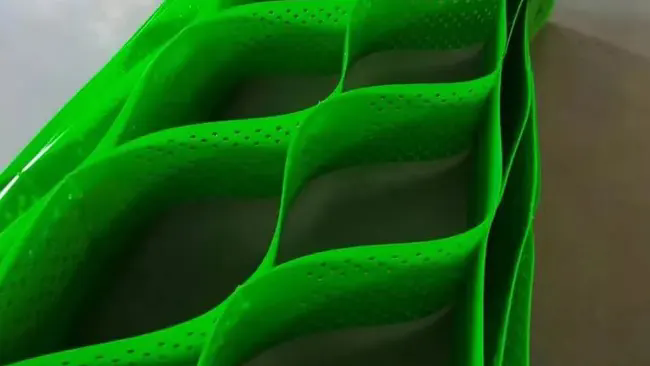Components of HDPE Sheet Extrusion Machine For Geocell
2024-06-13
An HDPE sheet extrusion machine for geocell production is a specialized industrial equipment used to manufacture High-Density Polyethylene (HDPE) sheets that are subsequently processed into geocells. Geocells are three-dimensional cellular structures made from plastic materials like HDPE, which are used in civil engineering and construction for soil stabilization, erosion control, and slope protection. Here’s an overview of the HDPE sheet extrusion machine for geocell production, including its components, process, and applications:
Components of HDPE Sheet Extrusion Machine
1. Extruder: The heart of the machine, where raw HDPE resin pellets are melted and homogenized under controlled temperature and pressure.
2. Feed Hopper: Where the HDPE resin pellets are fed into the extruder for melting and processing.
3. Screen Changer: Filters out contaminants and ensures consistent flow of melted HDPE material.
4. Die Head: Shapes the molten HDPE into a flat sheet of uniform thickness.
5. Calibration Unit: Provides controlled cooling and sizing of the extruded HDPE sheet to achieve the desired dimensions and surface finish.
6. Haul-off Unit: Pulls the cooled and solidified HDPE sheet from the extruder at a controlled speed.
7. Cutting and Stacking Unit: Cuts the continuous HDPE sheet into specified lengths and stacks them for further processing or packaging.
Process of HDPE Sheet Extrusion for Geocell Production
1. Material Preparation: HDPE resin pellets are loaded into the feed hopper of the extruder.
2. Extrusion: The pellets are heated and melted in the extruder barrel, forming a continuous molten HDPE mass.
3. Shaping: The molten HDPE is forced through the die head, which shapes it into a flat sheet of the desired width and thickness.
4. Cooling: The extruded HDPE sheet passes through a calibration unit where it is cooled using water or air to solidify the material.
5. Haul-off and Cutting: The solidified HDPE sheet is pulled by the haul-off unit at a controlled rate and cut into sheets of the required length.
6. Stacking: Cut sheets are stacked and may undergo additional processing steps depending on the specific requirements for geocell production.
Applications of Geocells
1. Soil Stabilization: Used in road construction, railways, and embankments to reinforce and stabilize soils.
2. Erosion Control: Prevents soil erosion on slopes and riverbanks by confining soil particles within the cellular structure.
3. Retaining Walls: Supports retaining walls by providing structural reinforcement and soil confinement.
4. Landfills: Used in landfill liners and caps to enhance containment systems for waste management.
Considerations for HDPE Sheet Extrusion Machines
1. Capacity: Choose a machine with the capacity to produce HDPE sheets of the required thickness and width for geocell manufacturing.
2. Quality Control: Ensure the extrusion machine maintains consistent temperature, pressure, and material flow to produce high-quality HDPE sheets.
3. Energy Efficiency: Opt for machines that are energy-efficient and capable of recycling process waste to reduce operational costs.
4. Maintenance and Service: Consider the availability of technical support, spare parts, and maintenance services to minimize downtime.
Summary
An HDPE sheet extrusion machine for geocell production plays a crucial role in manufacturing durable and versatile HDPE sheets used in civil engineering applications. By understanding the components, process, and applications of these machines, manufacturers can select and operate equipment effectively to meet the demand for geocell products in infrastructure and environmental projects worldwide.



